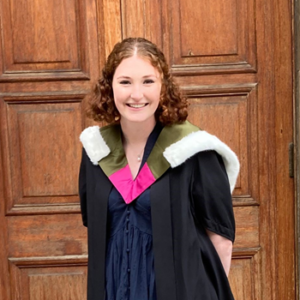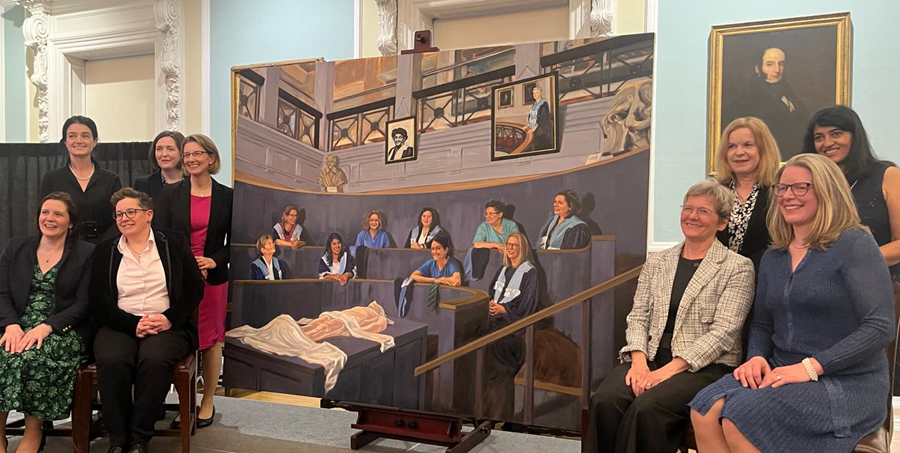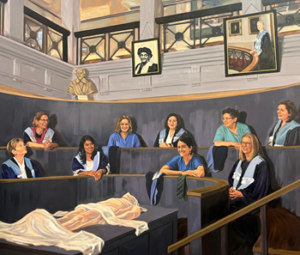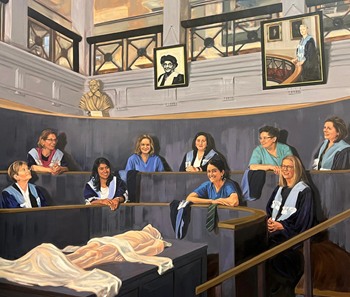Year 5 medical student Amberley, shares her experience visiting Surgeons’ Hall museums to see a powerful new exhibition featuring a portrait celebrating women in surgery.
 On a sunny afternoon not long before we entered the depths of exam season, I took myself to the Surgeon’s Hall museums to visit their new exhibition, “A Far Field and No Favour: The History of Women in Surgery”. The exhibition tackles the history of women in surgery and the various roles they have taken to supersede man-made barriers to their practice: from ancient healers, to midwives, to war doctors, all the way up to today, a community of award-winning surgeons.
On a sunny afternoon not long before we entered the depths of exam season, I took myself to the Surgeon’s Hall museums to visit their new exhibition, “A Far Field and No Favour: The History of Women in Surgery”. The exhibition tackles the history of women in surgery and the various roles they have taken to supersede man-made barriers to their practice: from ancient healers, to midwives, to war doctors, all the way up to today, a community of award-winning surgeons.
While a large portion is concerned with the role of missionary work and the world wars in enabling women to demonstrate their skills on a global scale – one highlight is a set of military medals owned by Elsie Inglis herself – the heart of the exhibition celebrates those practicing today. Across the main wall is a huge painting commissioned specially by the Royal College that features nine surgeons who have been recipients of the Hunter-Doig medal, an award given to female surgeons for excellence in the field since 2007. The painting is titled ‘Eleven Surgeons’ and the artist is Kirsten Mackinnon.
The women are pictured comfortable and laughing in their ceremonial robes and scrubs and are overlooked by portraits of the medal’s namesakes. Prior to this commission, the College’s collection held 144 surgical portraits, of which only three were of women, and the painting represents an effort to correct this imbalance and more accurately reflect the growing proportion of female surgeons by adding 11 more to the archives. Any medical students attending will likely recognise several of those pictured, and we have recently been joined by three of them on the Voice Box podcast sharing their perspective on diversity in surgery.

As well as celebrating the achievements of many trailblazing women in surgery, the exhibition doesn’t shy away from exposing the misogyny that held them back. The first panel features a quote from King Henry VIII – famous feminist and medical expert that he was – who decreed, “no women shall practice surgery”. Another corner features a letter from 1879 in which an agitated medical student petitioned for women to be barred from their lectures because they provoked in their unfortunate male colleagues “various feelings which tend to distract the attention”. The artefacts also shed a disappointing light on some revered names from Edinburgh’s own medical history.
Joseph Lister – father of antiseptic technique and the proud owner of a whole section of the museum’s permanent display – writes in one carefully preserved article that he believes the idea of women practicing surgery to be “perfectly monstrous”, a sentiment that he was apparently particularly vocal about throughout his career.

Of course, the discussion of men is far from the most interesting part of this exhibition on women in surgery. The fact that I was at least briefly scandalised by the sight of blatant sexism written in the fancy hand of some of Edinburgh’s most famous medical men did, however, prompt me to check myself. Because it is of course not surprising at all, and my ability to lose sight of these realities is a testament to the hard work of the many inspiring surgeons celebrated in the exhibition who fought for the right to practice what they loved.
Famously stubborn and practical in personality – but getting away with it so long as their “behavioural traits are desirable” (a slightly more familiar sentiment found in a letter of recommendation for a Miss Macaulay in 1937) – these surgeons have passed the torch down the generations despite many obstacles placed in their path, and the nine women immortalised in the College’s portrait stand as proud representatives of where these efforts have brought us today. And while there are still obstacles and still plenty of work to do, it is because of them that women like me can stand at the start of our careers confident in the knowledge that there is a place for us at the operating table, if we would like to take it.
Related links



